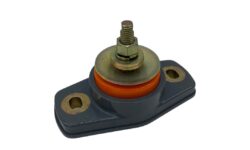5 Ways to Pack Home Theatre Equipment When Relocating
Relocating to a new location can be exciting and fun, primarily because you will meet new people and explore a new environment. However, the moving process can detract from the enjoyment of this experience, and it is exacerbated if you do not know how to pack properly. Of course, hiring experts to assist with the process is always an option. However, it is no secret that this option is frequently expensive, and it can sometimes amount to a small fortune when added to the pile of expenses you already have to deal with. Be sure to also read this article; 3 Major House Moving Mistakes That You Must Avoid.
If you find that hiring experts is out of your price range, DIY packing is always a viable option. Although this task can be difficult, as you are aware, it is very doable if you know how to approach it. However, you will need to be extra cautious when packing some delicate home appliances, such as your home theatre equipment.
Packing such items incorrectly can frequently result in one or more damages, which often results in additional costs. This article will show you how to pack your home audio and theatre equipment the best and safest way possible. Please read all the way to the end of this article to learn how to properly secure your expensive audio equipment when moving. Contact a storage solutions professional if you need storage space for your audio equipment when moving.
Supplies required for packing audio equipment
When packing your sound systems, you want to make sure that you do it correctly to avoid any damage to the appliances. As a result, you must be adequately prepared for the move by bringing all necessary packing materials and supplies with you. The following is a list of items that you will need to properly pack your audio equipment for your upcoming move.
- Boxes for packing
- Plastic bags
- Bubble wrap
- Tape
- Scissors
- Permanent markers
- Colored tags
- Clips
5 essential hints for packing your home audio equipment when relocating
1) Examine How Each Component Is Connected: This is an excellent strategy.
given that you will have to reconnect these components in your new location You can take pictures of the connection before you start packing to ensure that you can reconnect them later.
2) Disconnect The Cables: The next step is to disconnect the cables from the components in order to facilitate packing. You must, however, label each cable with a colour tag that corresponds to the colour on the port from which it was removed.
3) Clean the Components: Before you begin packing, clean and wipe the surface of the components with a damp cloth.
4) Wrap Components Separately: After cleaning the devices, wrap each component separately with packing paper and bubble wrap. Place the packing paper first, as bubble wrap can scratch device surfaces.
5) Separate the equipment into different boxes for components, cords, and remotes, and label them with your marker. Ascertain that each piece of equipment is neatly arranged in the appropriate boxes.
Conclusion
Packing all of your electronic devices correctly when moving can help keep them safe and save you money on repairs after you pack. The steps outlined in this article can assist you in packing your sound systems and home theatre equipment in a safe and easy manner. However, you must remember how each component was connected so that you can correctly reconnect them after moving to your new location. The advice in this article will be beneficial to you.
Using a reputable Runaway Bay removals specialist will ensure that your valuable audio equipment arrives safely at your new location.



